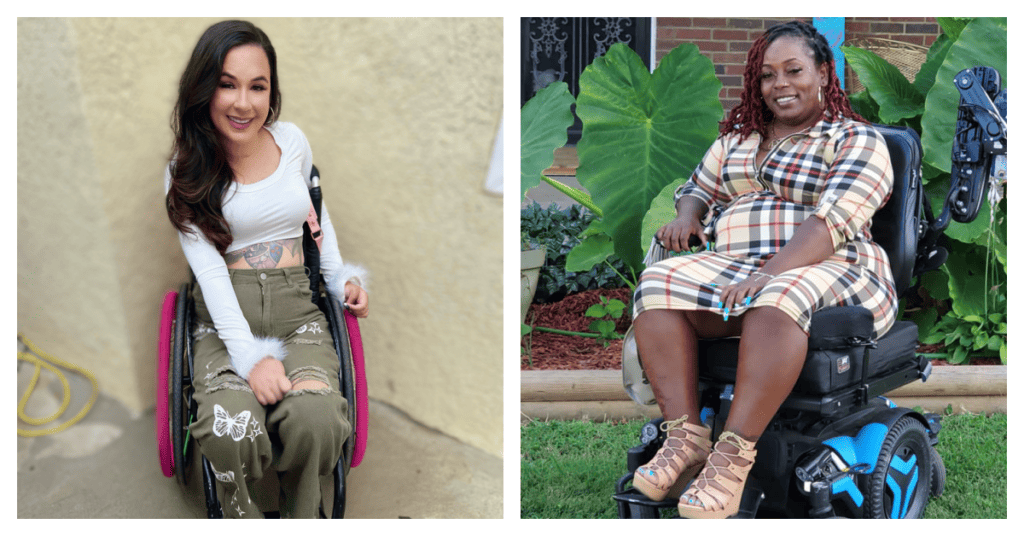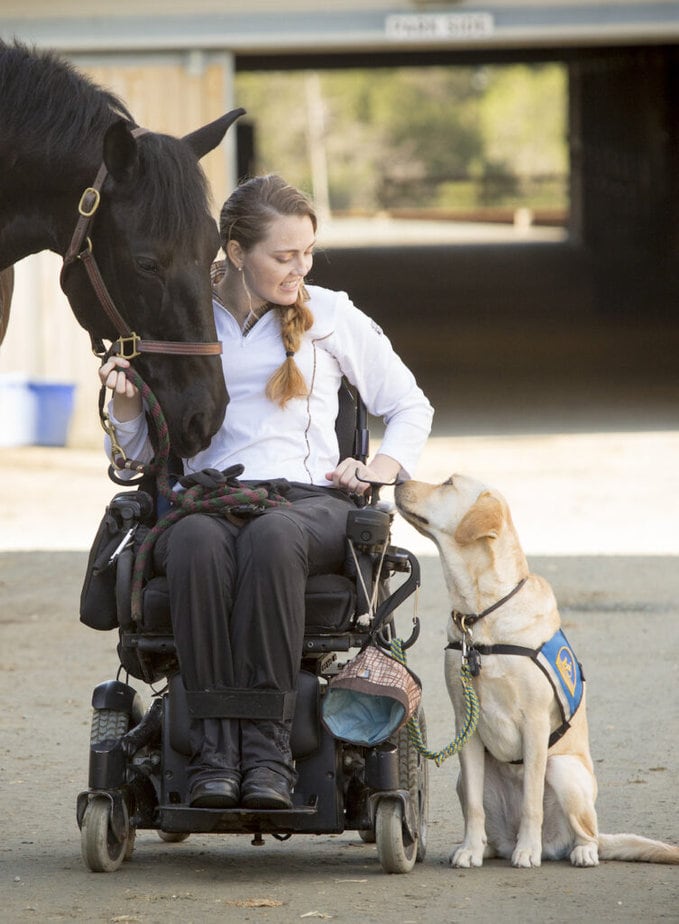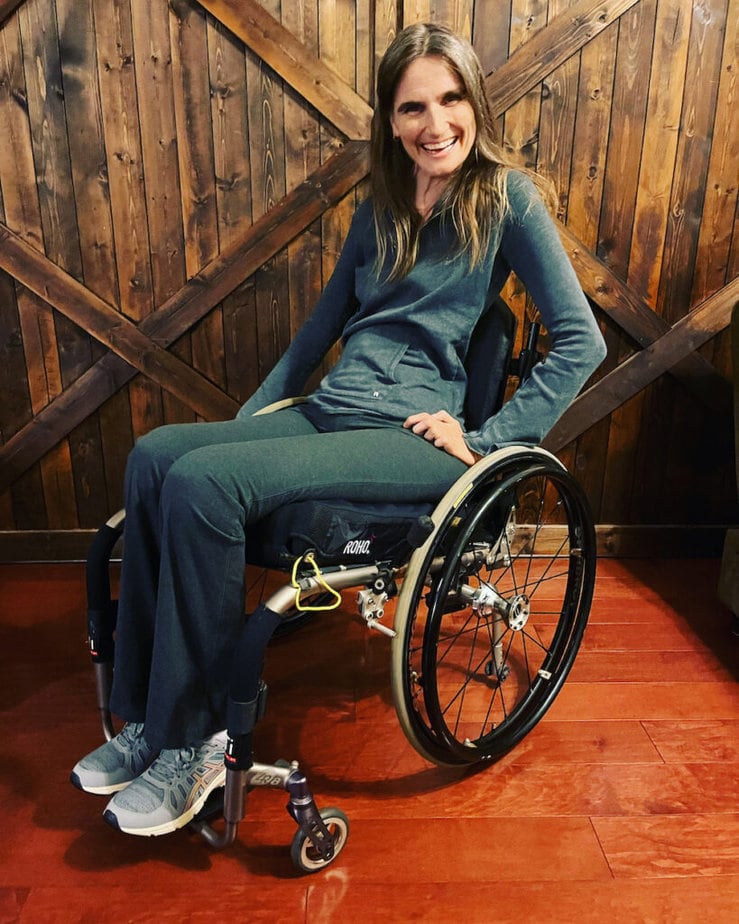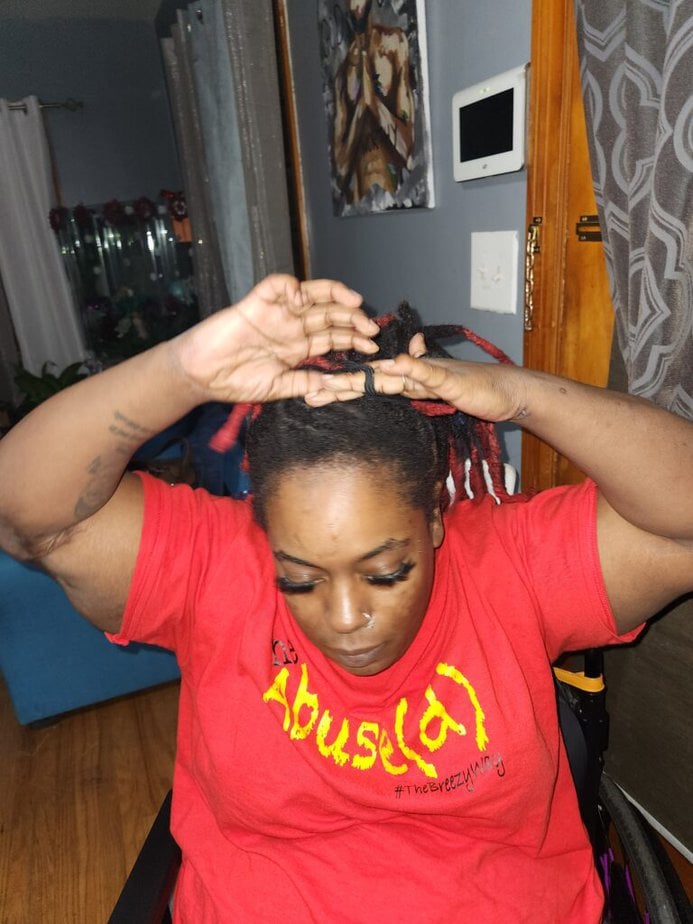Six Tips for Styling Your Own Hair with Limited Hand Function
How to style your own hair, make salons functional and direct caregivers to get the results you want.
May 18, 2023
Jenny Smith
After I sustained a C6-7 spinal cord injury when I was 16, I quickly discovered that my hands were not up to the challenge of hot rollers, aerosol hairspray and a curling iron. While I was in rehab, my best friend styled my hair with enough hairspray to destroy Earth’s atmosphere. It was the late 1980s — what can I say? But when I returned home from rehab, it was apparent that my mom had absolutely no ability or time to do my hair each morning. Within six months, my hair was shoulder length.
I now enjoy the ease of a shorter hairstyle that I can manage myself. But I admit that I still envy the women who keep their long tresses.
I interviewed several quadriplegic women to see how they manage their hair independently. Here are six hair tips if you have impaired hand function or balance.
1. Give it Time
“A lot of my hair was left on the highway,” says Chelsea MacDonald, a C6-7 quad with minimal triceps who was injured in a car accident. “I had 30 staples in my head. My hair became a different texture. I had different layers throughout my hair from my injuries in the accident.”

MacDonald’s comments aren’t uncommon. Cassandra Brandt, a C3 complete quad, spent time in a nursing home after her injury, and a lack of maintenance left her hair so matted that she had to cut most of it off. “It grew back but took time,” she says.
Vicki Kowaleski was injured in a diving accident at 22, which left her a quad. Following the trauma of her injury and hospital stay, her hair grew back slowly but with “baby hairs coming in all over the place. … It looked really awkward. I trimmed it every month to keep it from getting shaggy.”
Time allows your hair to grow while you learn what schedule, accessories and products work best for you. While MacDonald and Kowaleski both cut their hair after their injury, they let it grow long again after the first few years.
2. Skip a Shower, But Not a Hair Wash
As a quad, taking a shower can be exhausting, or impossible when the shower is inaccessible, no caregiver is available or low blood pressure makes one unsafe. When a full shower isn’t doable, Sandy Redmon, a C6 quad with no triceps, has figured out how to wash her hair at the sink. “My kitchen sink has a spray nozzle that extends from the faucet. I tilt back in my power chair to wash my hair to make it easier.” Even without triceps, Sandy has figured out how to make the kitchen sink a workable shower alternative. “It’s not pretty and can be a little messy, but it’s worth it.”

“Before I figured out a good system for washing my hair, it would get so dirty,” says Brandt. Showering is difficult for her, and she says that her hair stayed too dirty before she figured how to wash her hair outside of the shower. “After a while, I figured out how to stay in my Hoyer lift and wash my hair with a cup and basin,” she says. “It was a game changer.”
When a shower isn’t an option — whether due to inaccessibility while traveling or restrictions after surgery — an inflatable washing basin is my go-to for clean hair. The basin easily inflates and includes a drainage tube to empty the water into a trash can. Once it’s deflated, the portable basin easily fits into a suitcase.
Easy-Use Product and Accessory Tips
- Choose brushes and other accessories based on the handle. A larger or ergonomic handle can be easier to hold. Also, look for longer brushes, which can make it easier to get to hard-to-reach spots for anyone with arm and hand strength issues.
- Flip-cap tops can be easier to open. MacDonald pushes the bottle against her chin so the product goes into her palm.
- Transfer liquid products like detangler or curl enhancer into a continuous spray bottle.
- Use dry shampoo or baby powder to squeeze in one more day before a hair wash. Redmon sprays the shampoo onto the brush, then brushes her hair.
- For shorter hair styles, accessorize with headbands or fascinators for a fashionable look.
- Yerman uses a scalp scrubber to get the roots of her hair extra clean.
3. Best and Easiest Hair Styles

The best hairstyle is the one that works for your lifestyle, hair texture and activities. “My long hair helps me to feel feminine and beautiful,” says Stefanie Putnam, a C4-5 quad. But her long hair does double duty. “The main reason I don’t have short hair is because I like to keep my hair at a length that is braidable.” Putnam keeps horses and competes in “combined driving” — a sport in which horses pull a carriage — so the braids help keep her hair out of the way.
With naturally curly hair, MacDonald found that she also prefers keeping her hair long. “I tried cutting it, but my hair was more difficult to style when it was short,” she says. Her styling regimen includes washing, combing, using curl cream and diffusing her hair on low heat. While it’s a lot of work, she only has to wash and style her hair every five to seven days. Chelsea fought her curls for a time and used a flat iron. “That was difficult and led to burns. Working with my natural curl works better than killing myself with the flatiron.”

Redmon has her hair long and straight. “I keep it pretty basic. I blow dry it from my forehead toward my back so it stays out of my face naturally, and then I tuck it behind my ears. If the blow dryer has a curved or ergonomic grip, it’s easier to hold,” she says.
Bree Williams is a C6-7 quad with some triceps. “As a Black woman, I have dreads. My mom did my hair, but now I go to the hairdresser to take some pressure off her,” she says. Once her dreads are complete, Bree can style her hair independently. “If my arms need to be above my head to put in bobby pins or pull it back, I lean over onto my bed so I don’t lose my balance and my arms don’t get tired.”
4. Communication, Patience and Trust
Teaching a caregiver to do your hair can take time and can be frustrating. Patience and good communication are important.

Redmon says that getting on the same page with a new caregiver takes time. “I ask caregivers to bear with me and give me time to convey what I want,” she says. “If they don’t do it the way I want, I’ll say, ‘Let’s try again.’ … It’s important to find a middle ground, even if it’s not right at first.”
MacDonald says she adapts to the capabilities of the people helping her. “I’ve been working with my burly husband for 19 years, so I never ask for something too complicated. He can pull my hair back into a messy bun or a claw clip. It’s more important for it to be functional.”
Slowing down and giving caregivers feedback helps Putnam remain in control. “My head is sacred. It takes a lot of trust to allow someone to touch my head or my hair. The sensations can be overwhelming at times and are heightened when my body is stressed out or run down,” she says. “This process can create a greater bond with my caregivers, or it can cause tension and be disruptive to my day.”
5. At the Salon
When you find an accessible salon, you must decide: to transfer or not to transfer?

Since Williams only washes her hair during salon appointments every two months, she takes the time to transfer into the salon seat for the hair wash. She transfers back and stays in her wheelchair while the stylist twists her dreads, and then stays in her wheelchair to dry her hair. “The transfer to the salon dryer is really low, so I bring a portable dryer.”
Kowaleski and MacDonald both choose to stay in their wheelchairs. “I always wash my hair before I go and have the hairdresser move the chair for the cut,” MacDonald says. “It’s just easier for everyone.”
Kowaleski says once she finally found a salon that was somewhat accessible, she adapted. “I don’t transfer out of my wheelchair for a hair wash. Instead, I lean over the shampoo sink, and my hairdresser puts a towel down so I can cover my face.”
6. The Dyson Airwrap

This article wouldn’t be complete without mentioning the most popular hair accessory on the market. The Dyson Airwrap uses air to attract and curl the hair around the barrel. The Air Wrap allows Kaley Yerman, who functions at a C6 level with her tendon transfers, to independently curl her hair. “It’s not a normal curling iron since it’s not hot,” Yerman says. It does take some work to separate pieces of long hair, but “it’s lightweight, and the buttons are easy to push with my knuckles.” Yerman uses the Active Hands glove to securely hold the Dyson.
The only drawback of the Dyson is its price. At approximately $600, this accessory gives some serious sticker shock. Several knock-off versions, including the Shark Flexstyle ($300), are now available at online retailers.
Mastering your hair after paralysis may take some time, but Redmon says the process is worth it. “Once you wash and style your hair on your own, make sure you celebrate that win.”
Whether you choose to go short or long, rely on a caregiver, or style your hair on your own, Putnam believes that our hair represents more than just an outward appearance: “My hair has become important to me, and I’m learning to take care of it. It allows me to have some self-love for my body and soul.”
Support New MobilityWait! Before you wander off to other parts of the internet, please consider supporting New Mobility. For more than three decades, New Mobility has published groundbreaking content for active wheelchair users. We share practical advice from wheelchair users across the country, review life-changing technology and demand equity in healthcare, travel and all facets of life. But none of this is cheap, easy or profitable. Your support helps us give wheelchair users the resources to build a fulfilling life. |


It’s too bad salons don’t have at least one wash area where the sear is move able. The salon I went to for years had two where the chair could be moved but when they remodeled they made these shampoo stations with stationary chairs like the rest. Ugh. Why can’t I have a nice shampoo and head massage like everyone else?!
I found a hair salon that has a hair washing station with flexible basins so not only can I stay in my chair, but I can lean back and the basin can bend to where I am.